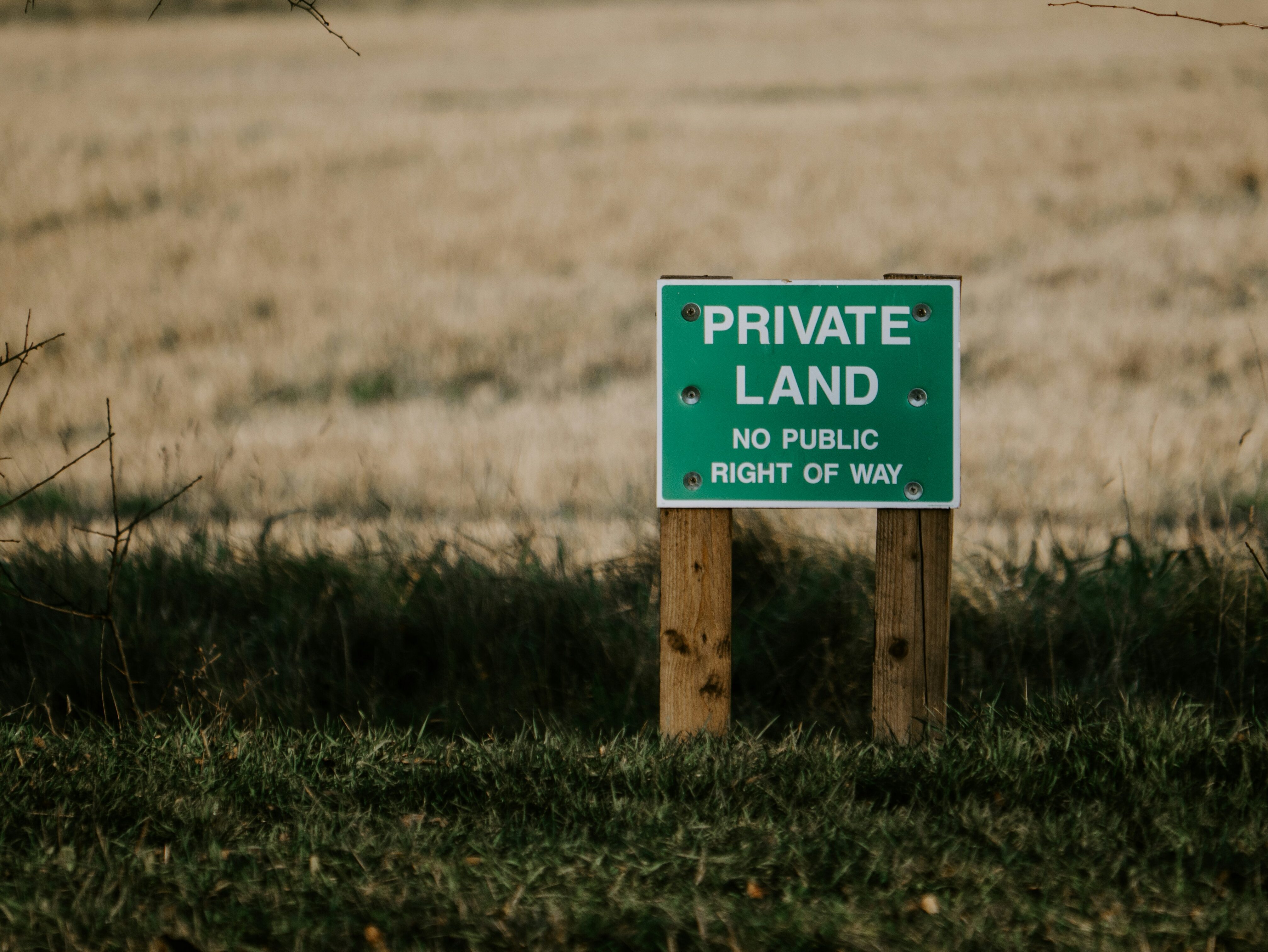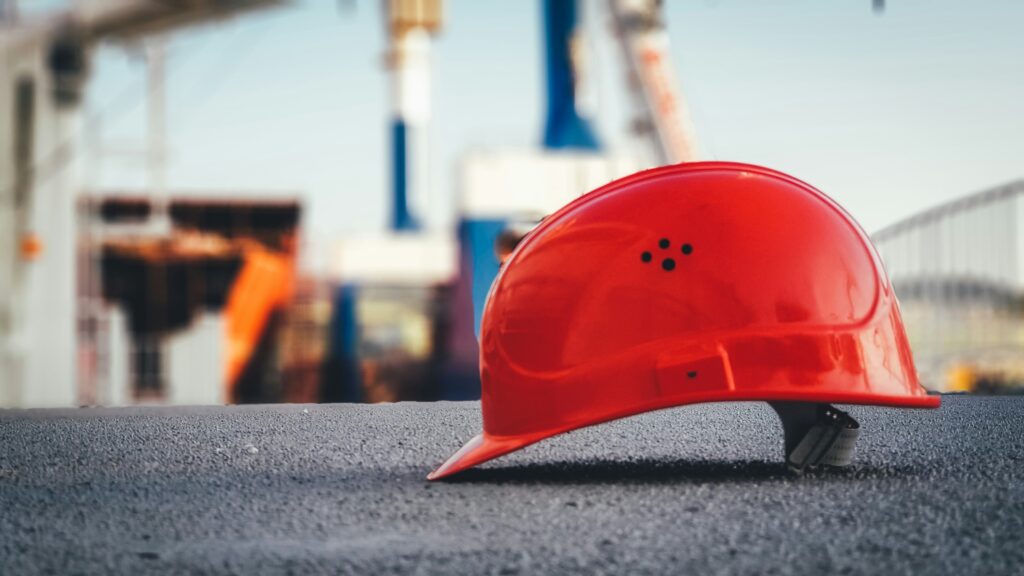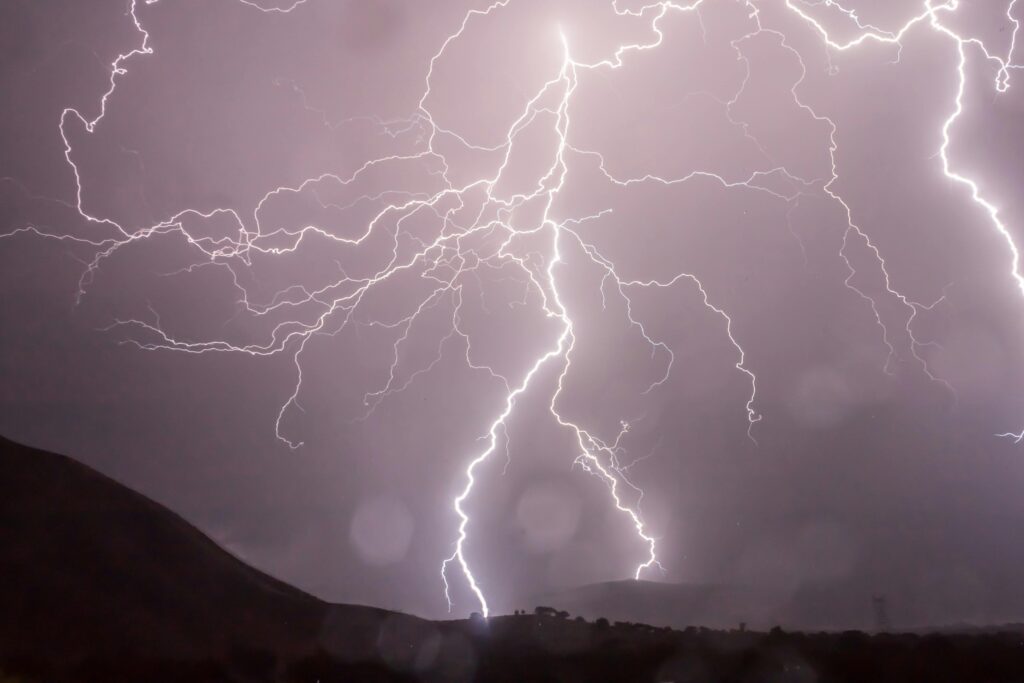Construction Risk Management Plan [+ Template]
Ask the right questions to make an informed choice.
- What Is a Construction Risk Management Plan?
- Why Construction Managers Need Risk Management Planning
- The Benefits of a Construction Risk Management Plan
- Examples of Construction Risks
- How to Make an Airtight Construction Risk Management Plan
- Checklists for an Effective RMP
- Construction Site Monitoring for Risk Management
- Your Plan, In Action
No construction project is without risk. Whether it be faulty materials, unidentified safety hazards, or equipment theft, your project has risks and liabilities. This is why all projects should include a construction risk management plan.
All businesses are encouraged to consider the potential risks of any initiative, but their concerns and how to best identify and analyze these risks differ greatly depending on the industry, project, and assets. In this article, we’ll unpack what an effective risk management plan looks like for construction projects, including a downloadable construction risk management template that will help lay the foundation for your success.
What Is a Construction Risk Management Plan?
Is a construction risk management plan necessary for your project? While your team may have other risk mitigation strategies like business continuity or disaster recovery plans, they typically aren’t as detailed as a construction risk management plan. So what makes this type of plan so valuable?
Risk management plans (RMP) record all the possible risks that might affect the success of a project. They help create efficiencies in construction safety management operations by helping identify problems that could impede progress and proactively developing solutions to manage or eliminate those risks.
Downloadable Template
Construction Risk Management Template
Download and customize this template with your project-specific details to proactively address potential risks.
Every business might take a somewhat different approach to creating a construction risk management plan. However, the most effective RMPs cover several core components, including:
Risk Identification
What are your risks? This step involves analyzing data from past projects and communicating with team members to understand risks that might appear again with future efforts. You might also hire a subject matter expert – one with expertise in construction risk management – to help identify other potential risks.
Risk Assessment
Gather your identified risks for assessment. Understand that not every obstacle poses the same level of risk. An assessment helps you prioritize risks based on the likelihood they might occur and their potential impact on the project. Many organizations use a risk assessment matrix to categorize risks.
Risk Mitigation
Typically included in a risk assessment matrix are risk mitigation actions for each challenge. Also called a contingency plan, a risk mitigation strategy lays out the process to reduce the impact of risk events. It leverages all the data gathered and analyzed and makes it actionable. Risk mitigation plans also assign team members responsible for monitoring risks and implementing solutions.
Risk Monitoring
It’s not one-and-done after you’ve built your risk management plan. Just because a risk has been identified and mitigated doesn’t mean it won’t appear for another project or even at a different point in the lifecycle of the same project.
Proactive risk monitoring helps ensure new risks don’t hinder progress toward strategic goals. It gives you more confidence to confirm a project’s success. It can also show the relationship between different risks, plus their connection to the various teams working on the project. In all, risk monitoring provides a comprehensive view of a given project.
Why Construction Managers Need Risk Management Planning
At its core, a construction risk management plan isn’t much different than any other risk management plan. It still entails all the steps outlined above. Yet, the concerns of construction companies are distinct. Consider these issues that can pose a risk:
1. Legal and Regulatory Requirements
Construction projects are of interest to many groups. It’s not just the client who hired your team to do the job. Local governments and environmental advocacy groups want to ensure your project doesn’t harm public infrastructure or ecosystems. The public might also have complaints if the project impedes traffic on their daily commute or access to certain roads. These complaints become a concern of local governments, as well.
Construction projects also must comply with regulatory guidelines such as OSHA and workplace safety. Violations can result in fines or charges. Permits are necessary to authorize the work, and all efforts must adhere to coding and licensing standards.

Many construction projects happen on private land but are still susceptible to unauthorized access by the public, creating further complications. Some people enter construction sites for thrills with no ill intent, but they can still harm the site or themselves. Others might enter to deliberately wreak havoc.
2.Project Complexity
You know that construction projects can be uncertain events. Project teams rely on suppliers for materials, so supply chain issues can hurt timelines. You might experience periods of understaffing, delaying progress. Since projects usually occur outside, don’t forget the potential for adverse weather conditions which might postpone efforts.
3. Stakeholder Expectations
In addition to juggling these challenges, you can’t lose sight of the reason for the project – your clients. Consider not just the client but any investors and other key stakeholders who have an interest in the final product.
Pleasing the client is essential for securing future business. So, you want to meet (or exceed) expectations. Yet, stakeholders can make requests in the middle of a project that forces your team to switch gears. For example, a client may have had a meeting with investors who have a different vision for the project. Changes can mean costly construction delays.
Another concern is miscommunication. Project managers want to ensure continual communication with stakeholders to ensure they understand the impact of project changes. Will they require additional materials, and how will this affect the cost? How can uncertainties outside the construction company and stakeholders’ control affect the project? A lack of communication increases risk.
The Benefits of a Construction Risk Management Plan
Organizations across the board are recognizing the value of risk management plans. According to research from IMARC Group, the global risk management market size reached $12.0 billion in 2023 and is projected to reach $35.9 billion by 2032. Various factors compound risk, making RMPs more than an additional consideration but a necessity.
Risk management strategies have broader implications than mitigating risks for a greater chance of success. This is the most direct advantage of an RMP, but other benefits follow, including:
Cost Efficiency
Financial risks are some of the most significant for construction projects. As such, understanding these risks and developing solutions to mitigate them can help save costs. Although unexpected costs are unexpected, risk management refers to past projects to identify the types of added expenses that most often or most likely will occur. This can help keep costs within budget, avoiding surprising stakeholders.
Time Management
Cost and operational efficiency go hand in hand. A concern with many of the risks impacting construction projects is that they might cause delays. This suggests that keeping on track with timelines is a top priority for your company.
A project risk management plan will involve ongoing monitoring to detect and mitigate challenges that hinder operations. It’s proactive, meaning teams have risk management tools ready to respond to these issues. Consider the reactive alternative, which is developing solutions as problems occur, impeding efficiency beyond the damage the risk causes.
Safety
Safety is one consideration that’s especially important in construction. According to research from the U.S. Bureau of Labor Statistics, about one in five workplace deaths in 2022 occurred in the construction industry, with falls, trips, and slips being some of the common reasons for these fatalities.
Statistics like these stoke a sense of urgency in project managers. A risk management plan involves identifying hazards that pose a threat to human life and well-being. An RMP can help you devise strategies to mitigate these hazards, such as workplace safety training programs and investment in personal protective equipment (PPE). While the safety of your employees is your priority, minimizing these risks can also build a positive reputation for prioritizing construction jobsite safety.

Quality Assurance
Although you might soon want to forget a project where risks led to failure, there’s value in hindsight. Risk management activities reveal areas for improvement, whether it’s scheduling, resource management, communication, or another operational weakness. These insights can empower your team to develop higher standards of work quality and ethics.
Reputation Management
Most importantly for your construction company, cost efficiency can mean a greater return on investment. Your projects become more profitable, making it easier to secure financing to invest in future jobs. It also increases client satisfaction, especially for investors. Your reputation gets a boost – potential clients see your reliability and the quality of work and are encouraged to choose your team for their projects.
Examples of Construction Risks
From working with untrustworthy vendors or subcontractors to supply chain or funding disruptions, risks are built into almost every aspect of a construction project. Understanding the different types of risk that your team might encounter will help you prioritize those with the highest probability of occurrence and potential to obstruct project objectives. Construction risk categories include:
Financial Risks
Construction projects have a single budget that must fit various expenses. There’s material and equipment, plus labor and insurance. Where the project happens might also pose a financial risk, as certain locations are subject to local currency rates and different taxes. Use risk management to predict what financial challenges might happen based on the project’s requirements.
Common financial liabilities you should include in your construction risk management plan:
- Going over budget
- Slow payments
- Market competition
- Fraud
These financial risks are influences that directly affect construction projects. But what about economic risks that have a broader impact, such as inflation? These factors can cause problems like spikes in construction costs, potentially creating other challenges like over budgeting.
Legal Risks
Subject to regulations and codes, construction companies can have more eyes on them than other industries. Your organization wants to comply with these guidelines to avoid costly violations.
Another concern is legal disputes that might arise when project delays or unexpected costs lead your teams to violate contract clauses. Even if the reason is outside your control, such as adverse weather conditions postponing efforts, it can cause friction between you and the client. So, examining contracts thoroughly before starting projects can help identify these risks and meet agreements.
Common legal liabilities you should consider adding to your construction risk management plan:
- Lawsuits
- Compliance issues
- Regulatory fines
Operational Risks
Also called project risks, operational risks are those that any business might experience because of poor project management. Common project risks you should consider when building your construction risk management plan:
- Scheduling and labor issues
- Equipment failures
- Inadequate resource allocation
- Supply chain disruptions
- Lack of funding
- Construction cybersecurity
Operational risks might seem like the most apparent but don’t underestimate their impact. They can influence financial and legal concerns, for instance, and failure to identify and mitigate them can lead to setbacks that damage reputation.
Environmental Risks
In the Global Risks Report 2024 from the World Economic Forum, 66% of respondents believe extreme weather will be the most likely cause of a global material crisis in 2024. This insight can be understood in a different way – environmental risk is one of the most significant impacts on all industries.
You may have seen them referred to as “acts of God” in builder’s risk insurance policies. At best, natural disasters can delay projects for weeks or months. At worst, they might render a construction site unusable, forcing the client and construction team to determine a new location. That’s why an effective way to account for environmental risks is to survey the land before beginning work. You also want to know if the geographical region is more susceptible to certain natural disasters.
Remember that environmental agencies might put regulations in place that restrict the kinds of construction that can occur in different areas. Be mindful of environmental regulations to avoid fines and reputational damage.
Examples of environmental risks you should consider adding to your construction risk management plan:
- Natural disasters (floods, earthquakes, tornadoes, hurricanes, wildfires)
- Weather impacts
- Environmental compliance (ties in with legal risks)

Worker Safety Risks
The last – but certainly not least – is safety risks. Your team’s safety comes before all other concerns. Accidents might happen even with the most skilled and experienced personnel assigned to the job. From handling potentially dangerous equipment to using hazardous materials, many situations can jeopardize workplace safety.
In helping you identify safety risks, an RMP allows you to develop better safety practices and offer proactive responses when accidents occur. It can also help guide equipment and materials management, ensuring team members understand how to use these resources properly to mitigate injuries.
How to Make an Airtight Construction Risk Management Plan
We’ve explained the main components of an RMP. Now let’s go into more detail about each step along the risk management process, with specific ideas for construction.
Step 1: Create a Risk Register
The categories of risk identified above are some of the most common for construction projects. They’re by no means the only risks you might encounter.
There are common challenges construction project managers face, making it easier for you to notice certain potential risks over others. Employees will spot some risks you might not have considered, as well as the client and other project stakeholders. Communicating with these groups is essential for a comprehensive perspective on risk. External subject matter experts are also valuable, as they offer unbiased insight into possible risks. Historical data will also shed light on risks that might otherwise go unnoticed.
Every risk management plan uses a methodology to manage risk mitigation efforts. For example, one of the most valuable resources for a construction risk management plan is a risk register. This document collects all information you gather related to risk identification, organizes it by priority level, and assigns risk owners. It also records data about assessments and response plans. It can serve as a guiding force once you reach the monitoring phase, so remember to implement a risk register to support your risk management plan.

What’s the difference between a risk register and your risk management plan?
The risk register is step 1 in your risk management planning. It’s a simplified version of the full risk management plan. It can be as simple as a spreadsheet to outline who is responsible for what risk response.
Your risk management plan is the full scope of work involved in responding to the risks mapped out in your risk register. It’s a step-by-step response to help your team navigate when things don’t go as planned – except they will be planned for.
Step 2: Analyze Each Risk
You now have a better understanding of the types of risks that might affect your construction project. What are the chances that each potential risk could become a reality? It’s likely not the same for them all. This is what risk analysis entails – determining which risks pose the greatest threat to prioritize efforts.
A risk breakdown structure can be helpful at this stage. This chart establishes risk categories and organizes them into a hierarchy. Individual risks are filed into these categories so construction teams can figure out how to devise an effective RMP. Another key tool is the risk assessment matrix.
The risk matrix helps you analyze qualitative vs. quantitative risk. What’s the likelihood of a specific risk occurring? That’s qualitative. The impact of the risk – that’s quantitative. Once you know these values, map them out in an assessment matrix.
Since construction projects are subject to many variables, a probability-impact matrix might not always provide enough insight. It’s why some teams rely on Monte Carlo simulations. This tool analyzes the probability of outcomes in scenarios where random variables make predictions difficult. Ultimately, it can make your risk assessment more accurate, which helps once you transition to risk response planning.
Step 3: Determine the Best Risk Response
You now have the information you need to confidently enact risk mitigation strategies. What it means to mitigate a risk won’t look the same in every case. Construction teams may respond to risk in one of four general ways:
- Acceptance: You might accept the risks if their potential benefits outweigh the possible consequences.
- Avoidance: Some risks can only be mitigated by changing your approach to the project entirely or declining the offer.
- Control: This approach feels the most like risk mitigation. You implement practices and measures to help reduce the likelihood a risk causes problems.
- Transfer: Solutions like contract clauses and insurance coverage can transfer the consequences of some risks away from your company and toward another party.
In addition to how you will approach the risk, your contingency plan should assign different risk owners. These personnel are responsible for identifying individual risks and seeing their resolution through, whether that’s acceptance, avoidance, control, or transfer.
Step 4: Monitor Risks and Response Plans
Next begins the ongoing process of risk monitoring. Your goal is to continue identifying risks as they appear, which might include new risks or changes to known risks. You’re also monitoring the effectiveness of your response plan. Risk audits and reassessments are two key techniques at this stage. Remember to keep using the risk register you built out in stage 1.
You also want to communicate about risk management to stakeholders. Regular status meetings make sure clients, investors, and even other leaders within your organization are aware of new developments with risks. For instance, a risk that was previously a lower priority has become a more significant concern. Changes like this must be shared.
Checklists for an Effective RMP
Developing a risk management plan can feel overwhelming, especially as you may have already created similar project management plans. Even as risks might be different from project to project, it helps to have a template. Your risk management plan template contains the core considerations that are likely to come up with every construction project.
Construction Risk Identification Checklist
Risk types and examples include:
- Financial risks: Overbudgeting projects, unexpected costs, rising costs of materials due to inflation
- Legal risks: Lawsuits from contract disputes, non-compliance
- Operational risks: Labor/personnel challenges, supply chain issues, equipment failure
- Environmental risks: Delays from natural disasters and weather patterns, compliance with environmental regulations
- Safety risks: Potentially hazardous equipment and materials, lack of safety precautions at construction sites
Other risks worth considering are personnel and stakeholder risks, as well as geopolitical risks.
Risk Analysis Checklist
Questions to ask when assessing each risk include:
- Probability: What is the likelihood that this risk event might happen?
- Impact: What kind of impact might the risk event have on the project?
- Loss: What/how much would be lost if the risk event occurred?
Risk Response Planning Checklist
Once you’ve identified and analyzed each risk, determine the proper response:
- Accept the risk, as the benefits it might provide may exceed any negative impact.
- Avoid the risk by restructuring the project or declining the job.
- Control the risk by implementing strategies to mitigate its impact.
- Transfer the risk to another party through additional contract clauses, insurance coverage, or similar solutions.
Risk Monitoring and Control Checklist
Risk owners have been assigned to risks – now you’re ready for ongoing monitoring. Tasks involve:
- Project management: Risk owners can analyze the changing probability/impact of the risk as the project progresses.
- Metric collection: Assessing the risk according to any metrics used for tracking.
- Incident remediation: Leveraging protocols outlined in the risk management plan for incident response. This task also ensures your RMP remains effective and aligns with project objectives.
Construction Site Monitoring for Risk Management
Planning for every possible scenario can be daunting, but leveraging modern tools and technology can add a stronger layer of security to your construction risk management plan. Construction management software, drone services, and construction cameras can help you safeguard your jobsite – no matter where you are in the world.
TrueLook Construction Cameras include 24/7 recording, motion detection, night vision surveillance, solar-powered camera capabilities, remote live view, and more. This level of functionality secures your construction project, creates transparency with stakeholders, and streamlines project progress. The benefits of construction site monitoring outweigh the initial investment.
Construction site cameras support better project monitoring – essential for any risk management plan. Contact us to learn more about our solutions, view a live demo, or get a quote.
Your Plan, In Action
Your construction company might have a great reputation for success but don’t think it’s immune to accidents and liabilities. A construction risk management plan can reveal what makes your projects successful or prevents you from meeting or surpassing objectives.
Download your free construction risk management plan to start laying the foundation for a better project. If you need an added layer of protection for your project, speak with a TrueLook representative to learn more about how construction surveillance can help.
